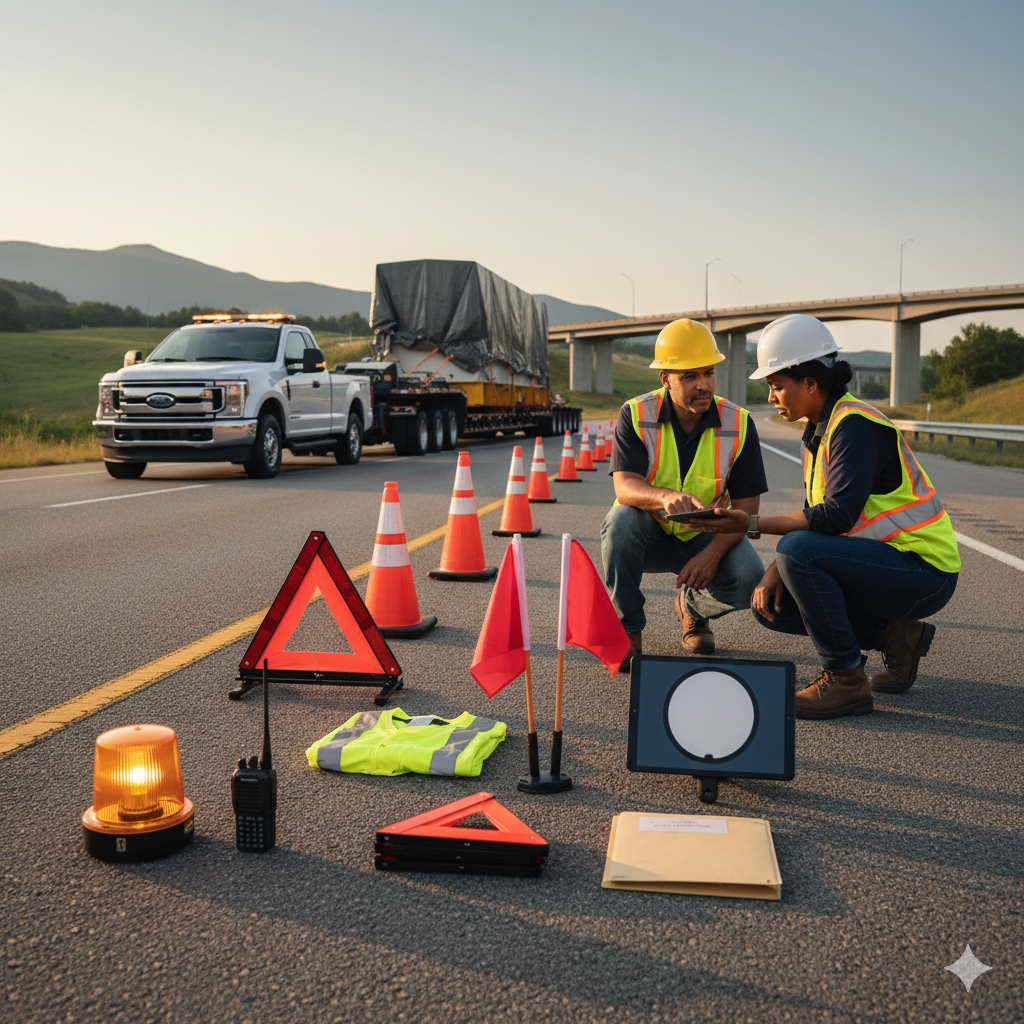When it comes to escorting oversize loads, few things are as critical as understanding pilot car equipment requirements. These standards exist to ensure that every oversize load is transported safely, protecting both drivers and the public.
While some equipment requirements are universal, most vary from state to state, making it essential for operators to stay informed and fully compliant. Reliable Permit Solutions emphasizes the importance of understanding these nuances to maintain legal and operational excellence.
Why Pilot Car Equipment Requirements Matter
Pilot cars aren’t just vehicles—they’re guardians of safety on the road. The legal foundation behind pilot car equipment requirements stems from decades of regulatory evolution aimed at minimizing accidents involving oversize loads.
Mandatory specifications cover everything from vehicle types to lighting, signage, communication devices, and emergency tools. Meeting these standards is non-negotiable, especially for operators working across multiple jurisdictions.
Universal vs. State-Specific Standards
While certain safety equipment is standard nationwide—like amber flashing lights, high-visibility vests, and proper signage—other elements vary by state. For instance, height pole regulations, flag dimensions, and strobe light specifications often differ, meaning operators must consult local regulations before each trip. Interstate operations require meeting the strictest state standards to avoid violations and ensure consistent safety.
Vehicle Standards
The first step in meeting pilot car equipment requirements is ensuring your vehicle qualifies. Accepted vehicles typically include SUVs, pickup trucks, and specialized escort vehicles capable of safely navigating highways and tight spaces.
Vehicle size, maneuverability, and visibility are scrutinized, along with maintenance and insurance standards. Reliable Permit Solutions advises regular inspections to prevent road issues before they arise.
Signage and Lighting
One of the most visible aspects of pilot car equipment requirements is signage. “OVERSIZE LOAD” signs must meet state-specific dimensions, mounting options, and reflective standards. Lighting equipment is equally regulated, with amber rotating or strobe lights required on nearly all escort vehicles. Some states even mandate unique light bar configurations, height requirements, or color restrictions.
Flags, Banners, and Safety Gear
Flags supplement or replace signage in some states, with minimum sizes usually around 18″ x 18″ and specific placement instructions. High-visibility vests, emergency warning devices, and first aid kits are also mandated. Together, these elements form the core of pilot car equipment requirements for on-the-road safety.
Communication Tools
Staying in contact with drivers of oversize loads is crucial. Most states require CB radios or two-way communication devices, sometimes specifying channels. Cell phones act as a backup, but operators must maintain reliable communication protocols to meet both safety and regulatory standards.
Measurement Tools
Height poles and measurement tapes help verify clearances for oversize loads, a necessity in states with low bridges or narrow roadways. Properly maintained poles can prevent costly accidents and align with state-mandated pilot car equipment requirements.
Documentation and Administrative Equipment
Efficient route planning, GPS systems, camera documentation, and storage for permit documents are all part of operational compliance. Reliable Permit Solutions underscores the importance of keeping administrative tools up-to-date to avoid fines and ensure smooth operations.
Certification and Training
Some states require formal pilot car certification. Training covers safety standards, equipment inspection, and communication protocols. Programs like the Professional Commercial Escort Pilot Car Program (PCCP) are recognized nationwide and help operators maintain compliance with evolving pilot car equipment requirements.
Maintaining Equipment and Compliance
Daily inspections of lights, signs, flags, and communication devices are non-negotiable. Maintenance logs, pre-trip checklists, and prompt replacements for faulty equipment ensure ongoing compliance and operational safety.
Multi-State Operations
For operators covering multiple states, meeting the strictest standards across jurisdictions is key. Reliable Permit Solutions recommends tailored strategies for equipment upgrades and documentation that align with multi-state operations, ensuring you never fall foul of a local requirement.
Technology and Modern Tools
From GPS-enabled route planning to digital permit management, modern technology enhances safety and compliance. Cameras for load monitoring and weather-tracking systems integrate seamlessly into pilot cars, boosting adherence to pilot car equipment requirements.
Conclusion
Compliance with pilot car equipment requirements is not just about following regulations—it’s about protecting lives, reducing risks, and streamlining operations. Reliable Permit Solutions offers guidance, resources, and a network of certified professionals to ensure your pilot car service meets every state’s standard. By integrating proper vehicles, signage, lighting, communication tools, and safety gear, operators can confidently escort oversize loads with professionalism and peace of mind.

